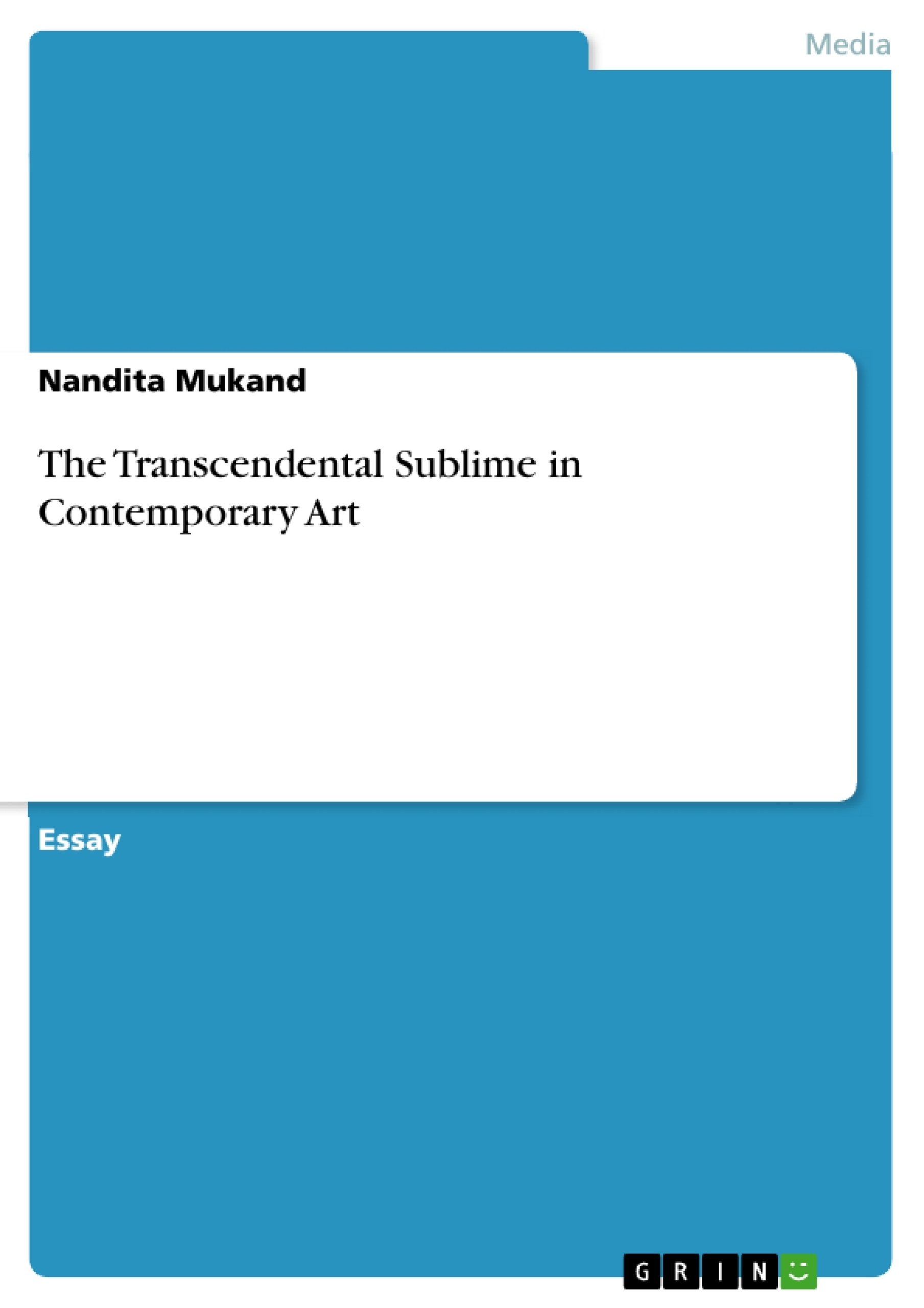In Robert Rosenblum’s book "Modern Painting and the Northern Romantic Tradition: Friedrich to Rothko", Rosenblum traces a continuing tradition in art from the 18th century to the 1960s, which centres upon the term ‘sublime’. In the past many artists (amongst them Caspar David Friedrich, Turner, Wassily Kandinsky, Mark Rothko, Barnett Newman) and theorists (amongst them Edmund Burke, Immanuel Kant, Jean-Francois Lyotard) have explored the transcendental nature of the sublime in art.
Today we live in an age that prides itself on the loss of illusion. Ideas of transcendence in art are often seen as sentimental and viewed with skepticism. The word sublime seems to be stripped down to “the shock of the new” (often centered on horror).
This essay explores how the transcendental sublime is situated in contemporary art. The ‘transcendental sublime’ will here refer to how looking at a work of art can enable one to be transported, going beyond the given limits to a place of accessing one’s spiritual side. Art that has used shock and terror to achieve a sense of the sublime will be excluded from this discussion.
Inhaltsverzeichnis (Table of Contents)
- The 'Transcendental Sublime' and Contemporary Art
- “Bridge of Empathy” between the spectator and the transcendental landscape
- Use of Contemporary Media
- Reaching the transcendental through the physical
Zielsetzung und Themenschwerpunkte (Objectives and Key Themes)
This essay examines the presence of the transcendental sublime in contemporary art, focusing on how viewing art can transcend limitations and connect viewers to their spiritual side. It contrasts this with the use of shock and terror to achieve a sense of the sublime, which is excluded from this discussion. The essay explores how artists are responding to the world of commerce, communication, and technology while still engaging with themes of transcendence and the natural world.
- The role of the transcendental sublime in contemporary art
- The impact of technology and media on artistic expression
- The relationship between art, nature, and spirituality
- The use of contemporary media to create new experiences
- The potential for art to provide a sense of harmony and contemplation in a world increasingly dominated by technology and consumerism
Zusammenfassung der Kapitel (Chapter Summaries)
- The essay begins by defining the concept of the transcendental sublime and contrasting it with the use of shock and terror in art. It also discusses how contemporary artists are responding to the increasingly commercialized and technologically driven world.
- This section explores how artists like Richard Long, Andy Goldsworthy, and Hamish Fulton continue the tradition of the Romantic sublime by engaging with nature and evoking a sense of raw and pure connection. It also examines the work of artists who use contemporary media to create new experiences, such as James Turrell, Emma Critchley, and Helen Sear.
- This section focuses on artists like Anish Kapoor and Shirazeh Hoshiary, who create art that expresses the spiritual through the physical. It discusses how these artists draw inspiration from Eastern wisdom and incorporate modern technology into their work. The section also explores how science is beginning to acknowledge and measure the intensity of the meditative experiences that art can create.
Schlüsselwörter (Keywords)
The essay focuses on the 'transcendental sublime' in contemporary art, exploring its relevance in a world increasingly dominated by technology and consumerism. Key themes include the role of nature, spirituality, contemporary media, and the potential for art to provide a sense of harmony and contemplation. Artists discussed include Richard Long, Andy Goldsworthy, Hamish Fulton, James Turrell, Emma Critchley, Helen Sear, Anish Kapoor, Shirazeh Hoshiary, and others.
- Arbeit zitieren
- Nandita Mukand (Autor:in), 2013, The Transcendental Sublime in Contemporary Art, München, GRIN Verlag, https://www.grin.com/document/298270
-

-

-

-
Laden Sie Ihre eigenen Arbeiten hoch! Geld verdienen und iPhone X gewinnen. -

-
Laden Sie Ihre eigenen Arbeiten hoch! Geld verdienen und iPhone X gewinnen. -

-
Laden Sie Ihre eigenen Arbeiten hoch! Geld verdienen und iPhone X gewinnen. -

-
Laden Sie Ihre eigenen Arbeiten hoch! Geld verdienen und iPhone X gewinnen.

